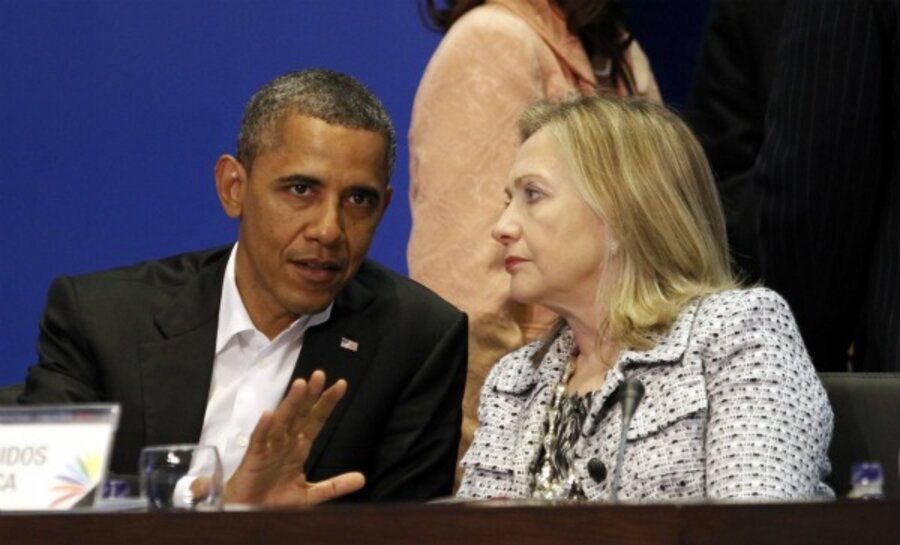Bigger scandal in Latin America than US secret service: US drug hunger
Loading...
| New York
As the drug war continues to ravage much of Mexico, other countries in Central America, and the Caribbean, the US Office of National Drug Control Policy could learn something from the controversial, yet virally popular, “Kony 2012” documentary in its fight against domestic drug use.
The success of the “Kony 2012” video, despite its various flaws, reveals an important yet absent element in the US drug prevention strategy: the need to appeal to the idealistic spirit of young Americans and connect US drug use to the increasing violence spreading through Latin America.
Since its release in early March, Invisible Children’s contentious “Kony 2012” documentary has been viewed nearly 88 million times. The organization has been slammed with criticisms, but the slick production video did successfully tap into one idea: Young adults want to right the wrongs of this world and align themselves with a greater humanitarian cause – even if activism stretches only so far as donning Livestrong bracelets, wearing TOMS shoes, or sharing a video via Facebook.
“Kony 2012” blames the international community, and in particular, the United States, for its inaction in stopping Joseph Kony and his Lord’s Resistance Army to commit violent atrocities in Uganda. In the drug war in Latin America, however, the US plays a far less passive role.
The US is the endpoint in a supply chain of drugs that originates in South America and travels up through Central America and Mexico. Despite costly prevention and enforcement efforts, the American appetite for illicit substances remains insatiable and rates of drug use have been relatively consistent for years – especially among young adults.
Unfortunately, the US Secret Service prostitution scandal dominated headlines from this weekend’s Summit of the Americas. It overshadowed regional leaders’ call for the US to consider new approaches to stanch US drug consumption and aid international partners in the fight against drug trafficking and violence.
Several Central American leaders – the loudest voice being that of Guatemalan President Pérez Molina – have been pressuring the US to legalize some drugs, such as marijuana. The US, however, remains steadfast in its opposition, even to decriminalization.
If the US refuses to decriminalize drugs and enforcement efforts are not enough to quell consumption, then the Office of National Drug Control Policy needs to rethink its prevention strategy. Utilizing the National Youth Anti-Drug Media Campaign (a propaganda campaign from the executive office and the Office of National Drug Policy) to educate young Americans on the magnitude of the regional violence. Challenging viewers to consider the international consequences of their actions is a strategy that has yet to be tried. Yet it could have far-reaching effects, both domestically and abroad.
Consider that in Mexico alone, there have been nearly 50,000 deaths from drug-related violence since President Felipe Calderón took office at the end of 2006. This breaks down to roughly one murder per hour for the past five years. Violence has spread further south, and Honduras and El Salvador now have among the highest rates of homicide in the world. Yet none of these facts or figures is incorporated into the anti-drug messaging that is broadcast in the US.
A prevention ad that exposes these realities and challenges its audience to boycott drugs in a stand against international violence could resonate with an older demographic that is not targeted in the current media campaign. While the widely recognized “Above the Influence” campaign has been successful at reaching early teens, it has narrowly focused on children between the ages of 12 and 17. Yet many people experiment with drugs as early adults.
The 2010 National Survey on Drug Use and Health (NSDUH) found that the percentage of drug users among young adults aged 18 to 25 was more than twice the percentage of drug users between the ages of 12 to 17. A media pitch that moves beyond the basic concept of peer pressure and appeals to an older audience needs to supplement the US anti-drug campaign.
This advertising strategy has been used before and has proven effective. The anti-smoking “Truth” campaign, launched in 2000 by the American Legacy Foundation, helped reduce and prevent tobacco use among teens because it empowered young adults to stand against the tobacco industry, not necessarily tobacco itself or peers using tobacco.
Additionally, a reimagined media campaign can serve a dual purpose: It would educate and promote prevention among an American audience, but would also send a powerful diplomatic message to foreign partners who demand that the US recognize its role in fueling the regional violence.
To be sure, US drug consumption is only one facet of the violence that spreads through Mexico and elsewhere in Central America, and successfully curbing it will require a multi-faceted approach. But a redesigned media campaign that targets a wider audience of young adults and empowers its audience to stand against regional violence can be a useful tool within a comprehensive strategy.
A viral “Drug Violence 2012” video might be the first step to reducing the American demand for drugs and the resulting drug violence.
Kristin Lewis is assistant director of the Task Force Program at the Council on Foreign Relations.





